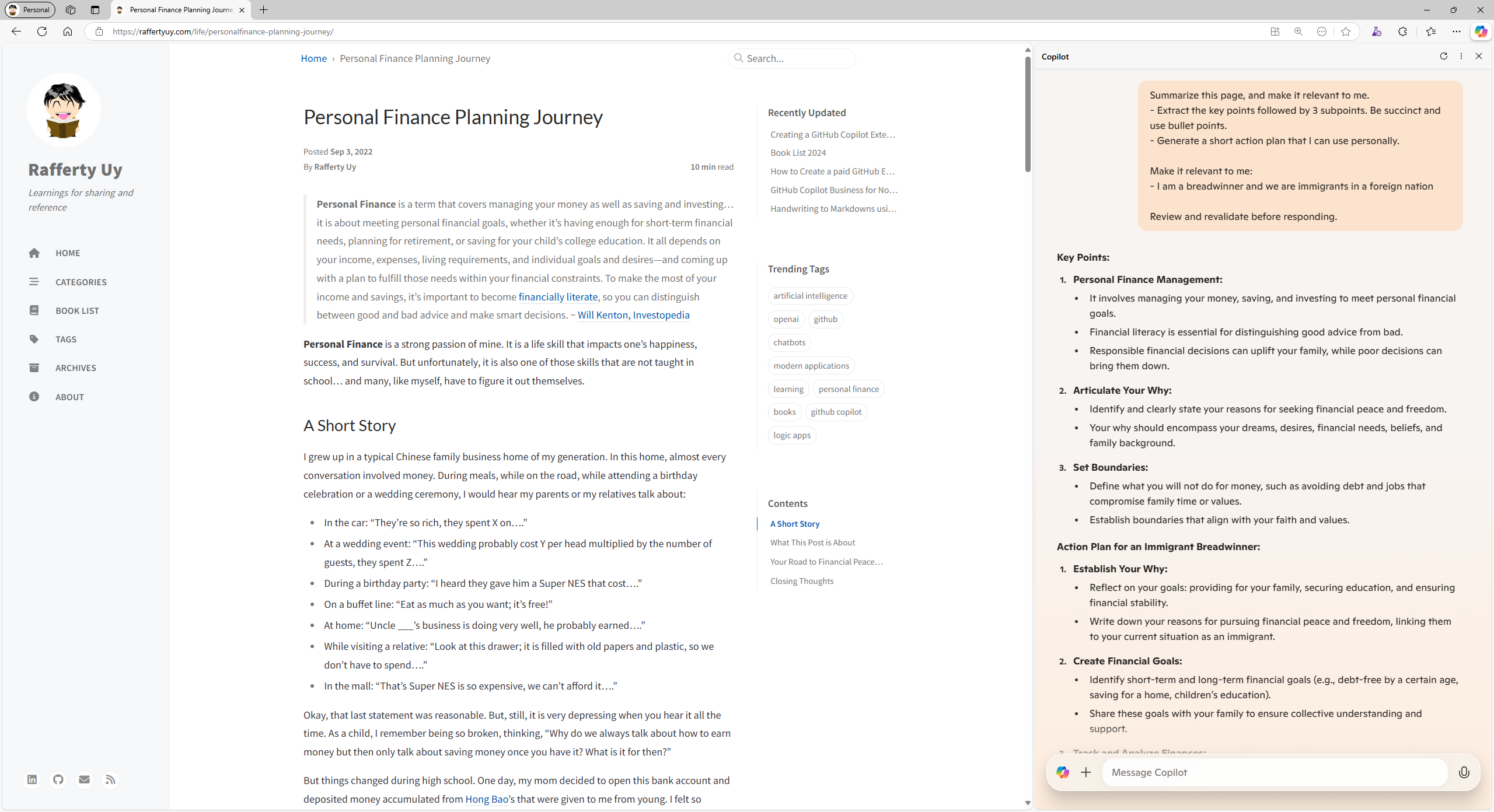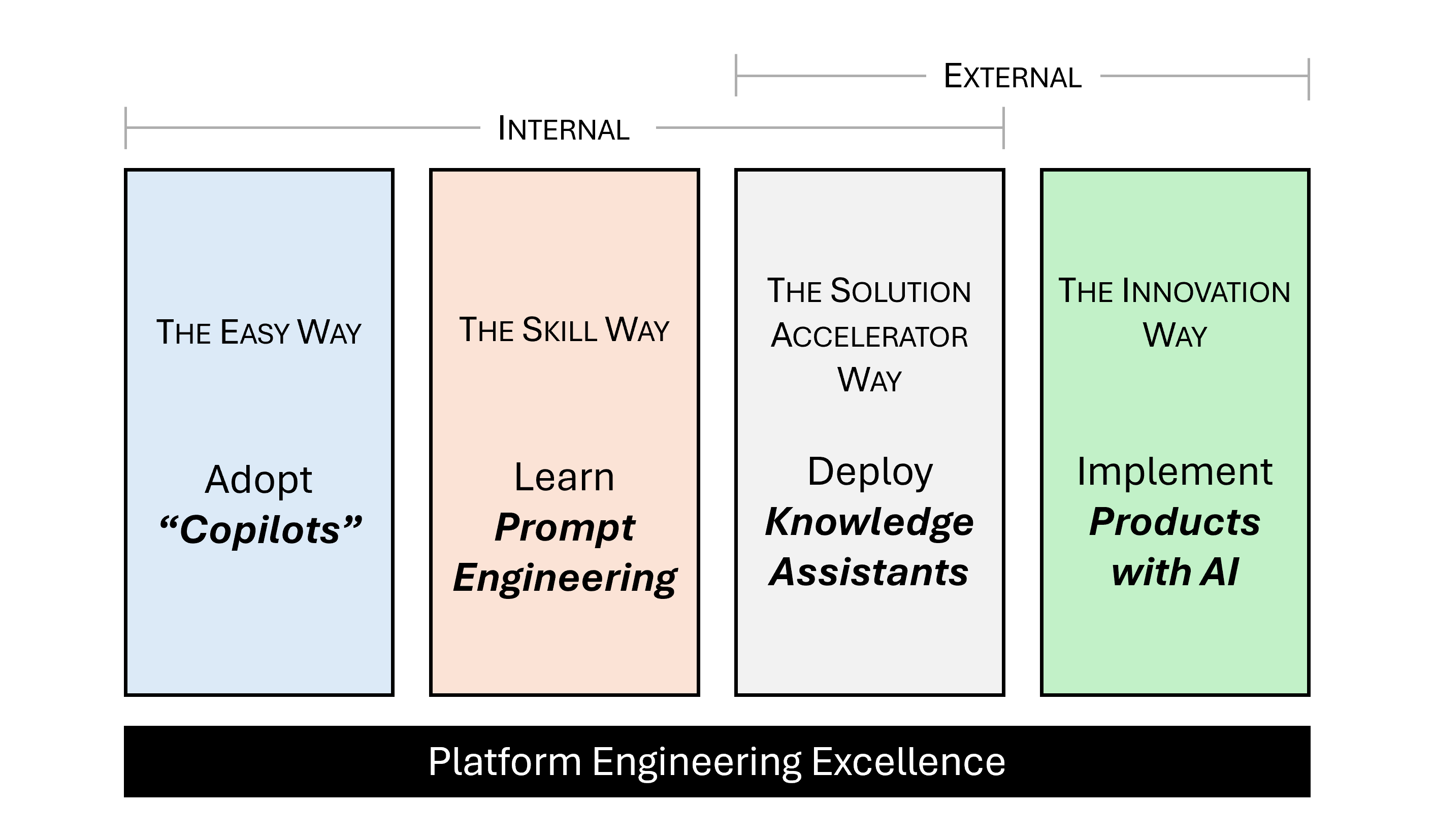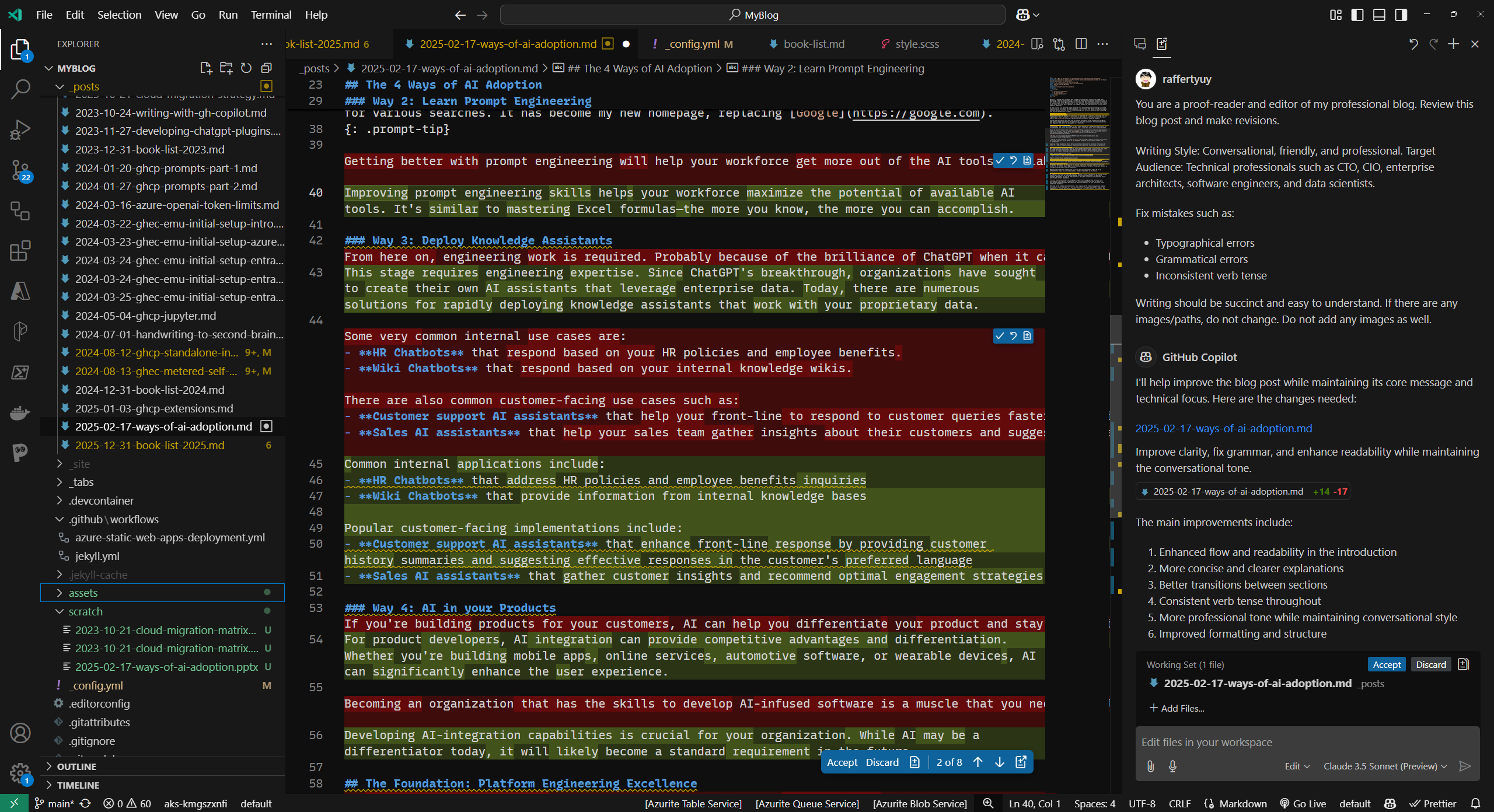The 4 Ways of AI Adoption for Increasing Business Productivity and Performance
Recently, I learned about a company that claimed to increase their productivity by 60% after adopting AI. This was quite surprising since most AI tools typically promise productivity gains of only 15-30%. After investigating further, I discovered that this remarkable increase was achieved by implementing AI across multiple areas of their business. While many organizations tend to adopt one or two AI solutions before pausing, this company embraced AI comprehensively, and the results speak for themselves.
In this article, I’ll share the common approaches I’ve observed organizations taking to increase productivity and performance through AI adoption. (I’ll refrain from naming the specific company mentioned above as the focus here is on understanding these different approaches and recognizing that you can implement all of them.)
The 4 Ways of AI Adoption
The Easy Way: Adopt “Copilots”
The quickest path to AI adoption is subscribing to ready-made AI “copilots” that align with your organization’s needs. Microsoft’s M365 Copilot and GitHub Copilot are prime examples.
Consider the applications your team uses for several hours daily. If AI can help save 10-20% of time spent in these applications, the productivity gains are substantial. For most organizations, this means the M365 suite. For developers, it’s their IDE.
The Skill Way: Learn Prompt Engineering
Everyone—and I mean EVERYONE—needs to learn prompt engineering. ChatGPT-like applications are now widespread, and if you think your employees aren’t using these tools, you’re likely mistaken.
One of my favorite tools is the Copilot extension in Microsoft Edge. It makes reading pages and extracting key points effortless, and it’s free! Here’s an example using one of my old posts.
 Page Summary using MS Edge Copilot
Page Summary using MS Edge Copilot
You can use this extension or access Microsoft Copilot directly for various searches. It has become my new homepage, replacing Google.
Improving prompt engineering skills helps your workforce maximize the potential of available AI tools. It’s similar to mastering Excel formulas—the more you know, the more you can accomplish.
Even as I write this article, I’m using GitHub Copilot to proof-read and make edits thanks to creative prompt engineering.
The Solution Accelerator Way: Deploy Knowledge Assistants (mostly chatbots)
This stage requires engineering expertise. Since ChatGPT’s breakthrough, organizations have sought to create their own AI assistants that leverage enterprise data. Today, most GenAI cloud providers (Microsoft, Amazon, Google, etc.) have implemented features and reusable “solution accelerators” that allow you to upload your own data and deploy into a quick-to-use chatbot.
Common internal applications include:
- HR Chatbots that address HR policies and employee benefits inquiries
- Wiki Chatbots that provide information from internal knowledge bases
Popular customer-facing implementations include:
- Customer support AI assistants that enhance front-line response by providing customer history summaries and suggesting effective responses in the customer’s preferred language
- Sales AI assistants that gather customer insights and recommend optimal engagement strategies
The Innovation Way: AI in your Products
If you’re building products for your customers, AI can help you differentiate your product and stay competitive. Be it a mobile app, an online service, a software in a car, or a wearable device, AI can be used to greatly enhance the customer experience.
Developing AI-integration capabilities is crucial for your organization. While AI may be a differentiator today, it will likely become a standard requirement in the future.
The Foundation: Platform Engineering Excellence
As systems grow more complex, engineering excellence becomes the cornerstone of successful AI adoption. Building AI-infused software isn’t just about understanding AI—it requires a new breed of technical expertise. Developers must grasp AI model fundamentals, while data scientists need to master secure and reliable software deployment practices.
Platform Engineering provides the foundation for scaling AI adoption across your organization. Through well-designed platforms, standardized tools, and automated processes, teams can build and deploy AI solutions efficiently and securely. This is precisely what enabled our example company to achieve their remarkable 60% productivity gain. Their investment in a robust self-service platform allows teams to independently provision resources, manage environments, and access AI capabilities—all while maintaining proper governance and security controls.
Conclusion
AI adoption doesn’t have to be an “either/or” decision—organizations can and should pursue multiple pathways simultaneously. Start with ready-made copilots for quick wins, invest in prompt engineering training for your workforce, leverage solution accelerators for internal efficiency, and strategically integrate AI into your products. However, remember that sustainable AI adoption requires a strong foundation in platform engineering excellence.
The key is to begin your journey while keeping the bigger picture in mind. The organizations that will thrive in the coming years won’t be those who simply adopted AI tools, but those who transformed their entire approach to leverage AI’s full potential across their business operations.

